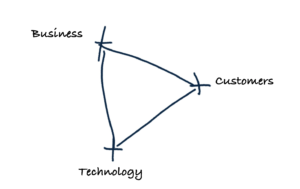I recently joined the panel discussions at the Singapore’s Marketing Society’ gathering. The subject for the session – “Evolving roles of CMO”
Rise of new expectations to be hyper-relevant
The discussion was preceded by a presentation from Accenture’s Brand Learning on a 12-market research, that was conducted with over 900 CMOs and over 500 CEOs.
The study revealed that
- CMOs are facing increasing pressure, yet a lack of confidence in them to drive growth
- CMOs and CMOs agree that the CMO function will change fundamentally over the next three years
However, only 17% of the CMOs respondents are pioneering and stepping up to generate greater value to shareholders when compared with industry peers by delivering hyper-relevant customer experiences. They are driving transformation and helping their organizations to respond quickly to changes customer needs
These CMOs are not simply throwing more money at the problem, what they are doing is actually far more holistic and transformational.
In fact, there is never been a better time to be the new breed of CMO.
(CMO is broadly used in the study to refer to those who are leading the marketing organization, not just those with the designation)
M is for Many
My heart leaped when I read the research. I felt a sense of vindication that my belief was right all along.
Indeed, the role of the CMO is no longer just about marketing. Their goals should be aligned to the organization’s growth and well-being.
CMO can be a vital business partner for the CEO. They can help CEOs to drive more meaningful value for customers.
In my conversations with CMOs in my network, they have also testified that the “Marketing” is no longer adequate to describe their roles.
Yet, many of us are hired by people who confine us within a box from an outdated paradigm.
I advocate M to stand for Many roles.
Marketing leaders need to rise up to put on the hats – Chief Collaboration officer, Chief Customer Officer, Chief Experience Officer, Chief intelligence officer, Chief Innovation Officer, Chief Growth Officer, etc.
My own journey
I realized that in my journey to drive disruptions and transformations, there are some good practices.
Recognize signs of time and stay abreast of the trend
E.g. We built new digital touch points to support our customers’ growing digital footprints.
Join the dots and build the trajectory of where the business and industry might be headed
E.g. We were the first in our industry to embark on content and social in a big way to win at various stages of customer funnel.
Be the bridge that brings people towards collaborations
I had to build relationships and break organizational silos so as to get different parties to see the common ground
In addition to many new discoveries, I learnt that it is possible teach old dogs new tricks.
3 vectors to start with – Business, Customer, Technology
I propose starting with these 3 vectors

Customers
CMO should assume a larger role as the “voice of the customer” across the company as it responds to significant changes in the marketplace. Spotting changing customer needs is a mandate of CMOs.
Constructing customer journey maps across the different customer persona is a good place to uncover underserved gaps. I find this to be a good source of ideas for improving customer experience design across customer funnel.
Business
As CMO, it is important to align yourselves with the business’ long-term and near-term objectives.
I made efforts to sit down with key stakeholders in the organization to understand how their P&L portfolio work. By doing so, I can triangulate how the business really operates. For example, what is the revenue margin? What are cost components needed to generate each incremental dollars of revenue?
I also sat in weekly sales meetings, walk the floor and make shared goals for success. Wherever possible, I kept a close eye on real-time dashboard to understand what worked and what didn’t.
Technology
The new marketing hygiene means embracing Madtech (Martech and Ad tech) for marketing automation, A.I. powered marketing, and more customized customer engagement.
More importantly, we should keep our ears to the ground for evolution of technology and how it is influencing the ways our industry and business operates.
CMOs need to be future-oriented.
A growing majority of the world’s GDP is starting to have digital footprints. As industry incumbents struggle to evolve and transform, we must keep a look-out for new entrants that leap-frog the technology adoption.
The retail industry is a good example where new eCommerce players are eating into the share of brick-and-mortar retailers who are slow to transform.
Breaking out of the box and shedding the M
It can be a lonely journey at first but you would be pleasantly surprised to find allies. My best allies in the transformation towards building better customer experience were my CIO and the Head of Operations.
Likewise, you can…
- Identify your like-minded allies
- Prototype and test your ideas to show quick wins
- Get sponsorship and support from your CEO
I believe that no one would say “no” to any initiative that helps to achieve eventual business growth.
However, the box of “M” can still be there at the end of the day.
We must also prepare to accept that, sometimes, the company is just not ready to embrace the greater potential of what the new breed of CMO can bring.
The truly disruptive CMO usually know what to do at this juncture.


Recent Comments